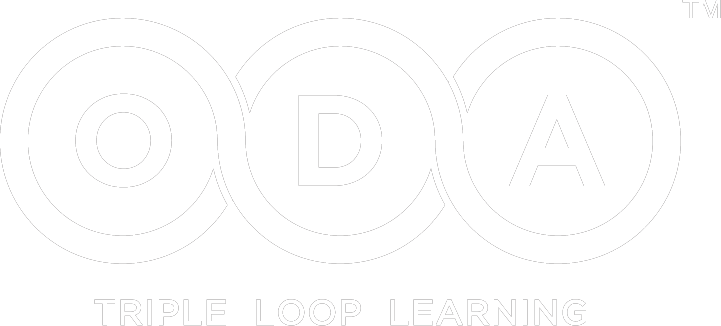- Home
- newsletter#6
- Leadership in the Digital era
newsletter#6
Leadership in the digital era is the strategic use of a company’s digital assets to achieve business goals. A digital leader is aware of the business goals and knows how their job responsibilities support the needs of their customers, the ever-changing business requirements, and the shifting economy. Also, successful digital leaders place a high value on their communication, creativity, and adaptability.
Wait! It seems like we are starting on the wrong foot. Let’s get real!
I am a leader working in the digital era. Many of my days seems like: my family and I are watching a thrilling documentary, where just before the mountaineer reaches the highest top, catastrophe hits, and their world gets strangely quiet. Then the birds suddenly scatter off the trees, and my thoughts start moving like squirrels in my head. Sitting in our chairs, we wonder what’s about to strike: A tidal wave? An earthquake? Another virus? Aliens?
Can you also feel these odds but are at a loss for words to express that? Even if words come out of the mouth, those don’t ring clear to the rational brain and are just aphorisms like broken, skewed, and incongruent?
It has been my privilege because of my work and interests, to be part of diverse communities, like ambitious young minds, managers in the middle muddle, academicians and coaches, and inclusion and diversity champions. Amongst many different perspectives generously shared, one aspect always stood out is “everyone has lost something.”
More than anything else, everyone has lost their capacity to fake it, their energy to be less than wholehearted. It is the call for flying change in the way leaders lead in the digital era.
It is the call for flying change in the way leaders lead in the digital era.
A flying lead change is a masterful feat of gravity defiance that happens mid-flight when the horse changes the lead. Horses usually remain in a particular lead, lead with either their left or the right set of legs, and continue their trajectory in that manner. It is only by external influences—like a radical change in topography—that the horse will change leads.
If this sounds like aphorism and intuition, let me bring the 2021 Corporate Longevity Forecast, which clearly shows that the average age of an S&P company was 33 years in 1964, was reduced to 24 years by 2016, and is expected to shrink to 12 years by 2027. There are forces of creative destruction at play, and leaders need to be on the top of their game to survive and thrive.
Leadership in the digital era:
When our day-to-day lives are increasingly immersed in technology, it is easy to lose perspective on things that matter; it makes the digital world less about technology but more about people.
The main thing is to keep the main thing the main thing. – Stephen Covey
So, leadership in the digital era is a lot about people. And, to keep the main thing the main thing, flying change is needed.
Along with external aspects like creating a compelling vision, communicating with purpose, and providing direction, leaders need to work on inner, harder (while many say it as soft skills) aspects like creating an environment of trust, psychological safety, and belonging.
Here I offer my experience, study, and observations of staying sane and thriving the paradox of leadership in the digital era, i.e., staying focused on the present while visualizing the future and creating a roadmap to reach it.

The practice shared by the author – ABC of Leadership in the Digital era.
Awareness, Agency, and Authenticity:
The simplistic definition of a leader has always been someone who stands for the right things in the right way, without any fear or pride or the feeling of I, me, and myself. Yes, they often stand on the pedestal to make things move – to show the vision, share their experience, and lead by example. Still, the awareness shifts for some self-proclaimed leaders for who standing on the pedestal occupies the whole frame.
It is not to point the finger and categorize leaders as good or bad. Leadership starts from living beyond labels, and I intend to bring attention to external aspects that play a subtle, but critical, part in this labeling – factors like the condition of the human race, the condition of work, and the condition of the world.
It is easy to get carried away by the shallow mediums with the human race shift from tribal/family/systemic survival towards a rational survival system. It is easy to overload ourselves with lots of information. Also, communism and capitalism don’t resonate with exemplary leadership in the world anymore. VUCA (Volatility, Uncertainty, Complexity, and Ambiguity) world stands close the reality.
Until March 2020, VUCA was an abstract term, but now it has caught the attention it deserves. When our capacity to deal with the VUCA-fied world is getting more sophisticated. Individual humane skills take center stage.
Each of us need to manage our inner office, our mind that loves to predict and build false perspectives by
- deepening our awareness about our outlooks,
- expanding our agency of skills, and
- acting from our authentic self.
Biases and Bridges:
As we learn to manage our inner office correctly, we meet the world more interconnected than over. All barriers are shattered already by technology, and there is a rise in a shared economy, online marketplaces, and digital platforms, reducing the distances between people, places, and society further. Traditional industries and traditional approaches are no more relevant.
In these times, leaders will be able to meet new avenues for growth only by stepping outside
of their comfort zones, by collective conscious and collective knowledge work.
Ford’s assembly line model sounds mechanical & industrial era. Still, it teaches how to identify the slowest dependency between two software systems or common ground between two humans. It is the story of listening with an open mind for some other times; this is the software engineer wife of a mechanical engineer husband talking.
Leaders need to be an avid listeners and open their minds to:
- burst their biases to be inclusive and create equality, and
- build the bridges that connect diverse perspectives and create new avenues.
Continual learning and Community:
When 5.27 billion out of 7.87 billion humans on the planet carry all the information they need in their pocket, accessible with one click, data no more stands the currency.
The projects we’re working on can lose significance very quickly through no fault of our own. The speed and efficiency at which we do things differentiate between success and failure.
The World Economic Forum’s latest report on Future of Jobs shows what used to be considered, the future of work has already arrived. 50% of all employees will need reskilling by 2025 with the increasing adoption of technology, and around 40% of workers will require reskilling of six months or less.
It is great to see that we have already entered the era of communities. The social circle of each individual has already expanded to the communities of common interests, communities for child-care & parenting, communities of healthy living, and whatnot.
Digital leaders need to:
- continually evolve, address the skill gaps, and prepare themselves and their teams to face the future by creating an environment of continual learning.
- create communities that are psychologically safe and helps to incubate new leaders, skills, and business ideas.
Conclusion:
In the digital era, a leader who stands on a pedestal can no longer position their power or authority over moving the right things in the right way.
The feeling of I, me, and myself has no place to hide.
Our topography is radically changing, and the way we lead ourselves, teams, and organizations need to change. Such topography calls us to flying change, the same physics-defying maneuver, with similar mastery and a culmination of complex and coordinated elements, like:
- Attunement to self-awareness, agency, and authenticity.
- Burst biases and build bridges.
- Continual learning and community building.
Leadership in the digital era needs to be reflective, rejuvenating, and regenerative. Our humanism, systemic thinking, and integration duties are more important than ever today to create an inclusive world, where everyone’s participation, involvement, and contribution finds their right place.
Shalu Ahuja (she/her) is an engineer & manager by education, people leader by practice, and DEI consultant & children’s book author by passion. She boldly challenges and redefines what it means to truly lead—in the workplace, in our families, and in our communities.
Please click here to download the latest OD PUBLICATION.


